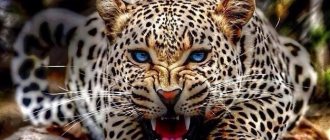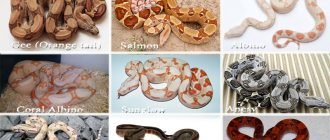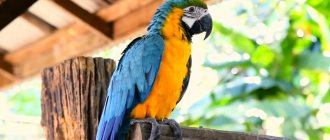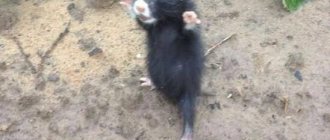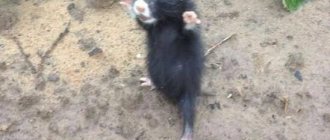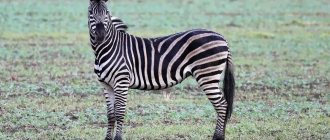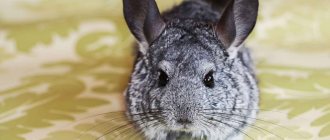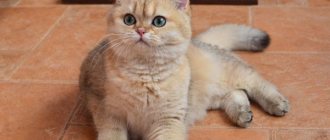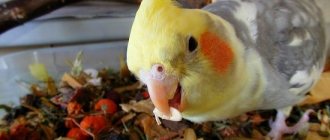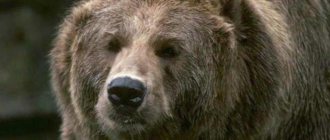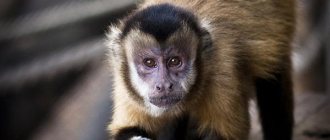Well, is it possible to remain indifferent to such an animal as a chinchilla? These miniature rodents with bright, beady eyes, a silky shiny coat and a fluffy tail, at first sight evoke sympathy and a desire to pick up the charming creature.
Unfortunately, not everyone loves the chinchilla. Lovers of natural fur consider these creatures only as a fashionable fur coat, and there are many mercantile people who rush to satisfy the whims of rich ladies. Spontaneous hunting for chinchillas has already led to the fact that there are almost no chinchillas left in the natural environment, and according to the latest data, there are hardly 10 thousand individuals in the wild.
These beautiful creatures are listed in the Red Book as an endangered species, but it is unlikely that animal activists will be able to save chinchillas from complete extinction, and perhaps the next generation will only see the furry rodents in pet stores or, in general, in pictures of wildlife magazines.
A brief excursion into the history of the origin of chinchillas
These beautiful rodents resemble hares, squirrels, and rats at the same time. Surprisingly, chinchillas have nothing in common with the above animals except external resemblance, and their closest relative is... the porcupine. There is also a version that chinchillas have a common ancestor with viscachas - long-tailed rodents that also live in the Andean mountains.
Chinchilla in its natural environment
Scientists believe that the genus of these rodents has ancient origins, and their age is more than 40 thousand years. They base their judgments on the fact that the remains of an unknown prehistoric animal were found in the Cordillera, the bones of which are very similar to the anatomical structure of the body of modern chinchillas.
The Inca tribes, whose empire stretched from Chile to Ecuador, have mined chinchilla skins for clothing and household items since time immemorial. Interestingly, they were not the first to pay attention to the valuable fur of these rodents. Before the arrival of the warlike Incas, the territories at the foot of the Andes belonged to the Chincha people, and it was from them that the conquerors adopted the tradition of hunting furry animals. By the way, it is believed that the name “chinchilla” itself comes from the name of the Chincha tribe, who sold their skins to all nearby settlements.
But the Indians were careful about nature, so chinchilla fishing was under the strict control of local priests, so the population of these animals was not threatened. The conquest of South America by Europeans was a real tragedy for furry creatures. Beginning in the 15th century, Spanish and Portuguese colonists exported from the New World not only gold and precious stones, but also beautiful chinchilla fur.
Unlike the Indian tribes, the Europeans, greedy for money, did not care at all about the safety of these animals, and killed them in the millions. The greed and gluttony of the invaders has led to the fact that within 4 centuries the number of chinchillas in the wild has fallen to catastrophic levels, and in some regions the animals have completely disappeared.
In the middle of the 19th century, the authorities of South American countries finally came to their senses and imposed a ban on chinchilla fishing. But by that time, rodents were already on the verge of extinction, and severe punishment for poaching could not stop lovers of easy money, so it was not possible to restore the chinchilla population in their natural habitat, and it is likely that in the near future these amazing creatures will be raised only in captivity.
Description of the rodent
Chinchilla – photo
– Advertising –
The chinchilla has a round head on a short neck. Body length is from 22 to 38 cm, tail length is 10-17 cm, it is covered with hard guard hairs. The eyes are large, the ears are round, 5-6 cm long, the whiskers are 8-10 cm long. The hind legs are four-toed, twice as long as the front five-toed ones, which allows the rodent to make high jumps. The auricles have special membranes that cover the ears during sand baths.
The thick and warm fur of chinchillas is necessary for the animals to survive in the cold mountain climate. This is one of the densest types of fur in animals: there are more than 25,000 hairs per 1 cm2 of skin. 60-80 of them grow from each hair follicle. Chinchillas do not have coarse guard hairs. Parasites cannot even live in such dense fur. Chinchillas do not have sweat or sebaceous glands; their fur gets wet in water and the chinchilla is not even able to stay on the surface. To get rid of moisture, remove lost hair and clean the fur of chinchillas, they take baths made from volcanic ash and fine dust and sand.
Where do chinchillas live in the wild?
The original homeland of these furry animals is South America, and their territory of residence is limited to three countries: Bolivia, Argentina and Peru. To be even more precise, chinchillas are distributed only in the highlands of the South American Andes, inhabiting inaccessible areas of rocks that are located at an altitude of 1000-4000 meters above sea level.
Chinchilla in his cave among the rocks
It would seem that in such an arid and harsh area as the northern Andes, it would be difficult for any animal to survive, but chinchillas have perfectly adapted to the local climate. These animals are not afraid of cold winds or frosts, and thanks to their thick, dense fur coat, they can easily withstand temperatures down to -30 degrees. And rocks and crevices serve as a reliable refuge for chinchillas from predators and a place where they can safely raise their offspring.
Lifestyle of chinchillas in their natural environment
These are nocturnal animals; during the day they hide in holes and among stones, and become active only at dusk. Small rodents live in colonies numbering up to two to three dozen animals. True, in former times, when chinchillas had not yet become the object of mass hunting, the number of their groups could reach up to 100 individuals.
Chinchillas have an extremely flexible and plastic skeleton, so they can fit into even the narrowest crevices. And thanks to their large black eyes and sensitive whiskers, these animals are excellent at navigating in the dark.
Southern viscacha (viscacha)
Whiscacha is most active during the daytime, with peak activity occurring around sunrise and sunset. It feeds on grass, mosses and lichens. The length of the southern viscacha reaches just over 40 centimeters, and the length of its tail reaches 30 centimeters. The southern viscacha weighs just over one and a half kilograms and lives on mountain slopes.
Southern viscachas
At home, this animal can live up to 20 years, but in natural conditions these small animals live no more than three years.
What do chinchillas eat?
In the wild, the diet of furry animals is quite meager and monotonous. They mainly eat plant foods: grasses, bush twigs, seeds and lichens. Chinchillas do not disdain the roots and fruits of plants; they willingly eat the bark of young trees. There is little precipitation in the highlands of the Andes, there are almost no natural bodies of water, so rodents replenish their water balance with succulent shoots of cacti. Chinchillas also love to eat insects, various beetles and their larvae.
chinchilla eats a piece of apple
Natural enemies
Large predators are not found in chinchillas' habitats, but they still have plenty of enemies. First of all, these are foxes that set up ambushes near the burrows of furry rodents, and patiently wait for the prey to carelessly emerge from its hiding place. Snakes often sneak into the gorges favored by chinchillas, and owls and eagle owls lie in wait for them in the pre-dawn hours. Taira is also not averse to hunting them - a predator from the mustelid family, whose small size allows it to deftly penetrate into the chinchillas’ lair, grabbing the first animal it comes across.
Camouflage color helps chinchillas successfully hide from predators
But the most dangerous enemy for these amazing creatures was and remains man, who, because of their beautiful fur, almost completely exterminated chinchillas in their natural habitat.
From whom did they come?
The prehistoric ancestors of chinchillas are considered to be animals called Meegamys by scientists. Their fossilized remains were found during excavations in the habitats of modern rodents. The age of the finds is about 40 thousand years. The biological structure of Meegamys is similar to chinchillas, but their size is much larger.
Based on the results of the excavations, a hypothesis was built that explains not only the origin of chinchillas, but also the unique properties of the animal’s fur. According to the researchers, during the process of evolution there was a gradual decrease in the size of individuals, but the number of hair follicles remained the same. As a result of these changes, the hair follicles on the skin of chinchillas are much denser than in other animals.
Social structure and reproduction of chinchillas
As already mentioned, furry animals lead a collective lifestyle, and matriarchy reigns in their community. Female chinchillas are larger than males, and it is they who make all the important decisions: where the flock will settle, when to leave the shelter, and how far to go in search of food. Interesting fact: the female also selects several sentries every night, who, while the rest of the family is feeding, must monitor the environment and, in case of danger, sound an alarm.
Chinchilla family
In difficult times for the colony, when there is not enough food, females have the right to expel a couple of males from the colony or even kill them in order to give the entire colony a chance to survive.
Chinchillas are monogamous and form strong mating alliances for their entire life period. Females become sexually mature at the age of 6 months, and males are ready to mate at the ninth month of life. The duration of pregnancy is from 3 to 3.5 months, and females can bear offspring no more than three times a year.
In one litter there are from one to three babies, which are born covered with fur and with open eyes. Already in the second week of life, furry cubs begin to try plant foods, but for another two months they feed on mother’s milk.
Baby chinchillas
Elena
Ask a Question
Question to the expert
Please tell me how many years do chinchillas live?
In the wild, these animals live 18-20 years. And in captivity, their life expectancy ranges from 13 to 15 years.
Lifestyle
Little data on the life of these animals has been recorded, since the natural habitat of chinchillas is inaccessible for research. According to some reports, in nature they can live 20 years.
In the wild, individuals gather in colonies of ten to one hundred animals. But even in large flocks, chinchillas are divided into monogamous pairs. Females occupy a dominant position because they are larger and much more aggressive than males.
Animals are active at night and sleep during the day. The animals are adapted to a nocturnal and twilight lifestyle thanks to their large eyes with vertically located pupils.
During the waking period, the colony provides a kind of security. The sentinels are inspecting the area. At the slightest threat, they warn the flock, which defends itself from enemies or runs away depending on the size of the attacker. The animals climb steep cliffs at high speed thanks to their well-developed cerebellum.
The animals do not stock up on food for unfavorable days, but use the supplies of their neighbors - chinchilla rats. The required amount of food for both types of animals is no more than a tablespoon per day, so the savings accumulated by rats are quite enough.
Types of chinchillas
At the moment, only two species are included in the genus of these animals: the large short-tailed chinchilla and the small long-tailed chinchilla.
Large long-tailed chinchilla
Large, short-tailed chinchillas were once widespread throughout Peru, which is why they were also called Peruvian. These are large rodents with a short tail covered with stiff hairs and a light gray coat. Their luxurious light fur was a desirable prey for poachers, which led to the almost complete extermination of the animals. Now large chinchillas can still be found in the mountains of Argentina and Bolivia, but their population is on the verge of extinction, and is included in the registers of the International Union for Conservation of Nature.
Small short-tailed chinchilla
The small (or common) long-tailed chinchilla is a resident of the Chilean Andes, preferring to settle in the lowlands of high-mountain plateaus, which is why they got the name coastal. They differ from their short-tailed fellow creatures by their more modest dimensions, long, densely pubescent tail and dark color. In the wild, their numbers have also reached a critical point, but the subspecies of small chinchillas is bred on farms as a source of industrial fur, and in nurseries as pets.
Until the 19th century, there was another variety of these animals - the royal chinchilla. They were the largest representatives of the chinchilla genus, reaching the size of a hare, and possessing long, bluish-gray fur. The reason for their disappearance was uncontrolled hunting, and now the only specimen in the form of a stuffed animal is kept in the German Museum of Natural History.
Final table of chinchilla species according to user ratings
Long-tailed
0
Short-tailed
0
How chinchillas were domesticated
When the demand for the luxurious fur of these animals throughout the feast reached unprecedented proportions, many people began to think about raising chinchillas in captivity. But all attempts to domesticate furry creatures failed, because no one knew what conditions they needed for reproduction, or even how to properly maintain them. And only the American Matthias Chapman managed to successfully breed these animals and establish the first chinchilla farm.
Breeding chinchillas on a farm
It is noteworthy that initially Mr. Chapman did not have such a goal. He had never worked with animals, since he was a mining engineer, not a breeder, and did not even know about the existence of chinchillas. Matias was working in a mine in Chile, and one day a local Indian approached him with a strange animal in his arms. The interested engineer began asking the visitor about his pet, and he offered to buy the rodent. The American didn’t even hesitate, he really liked the fluffy animal, and without hesitation paid the Indian the required amount.
Keeping a chinchilla at home
The popularity of these creatures is associated not only with their beautiful appearance, but also with their unpretentiousness in home maintenance. Chinchillas do not need street walks, do not require constant attention from the owner, and, being very clean, they themselves take care of their luxurious fur coat.
Cell selection
Don't think that a chinchilla can live in an old aquarium or even in a shoebox! Any pet requires optimal living conditions, and furry rodents are no exception in this regard. Therefore, the first thing you should take care of before buying an animal is a spacious and comfortable home for the animal. The cage must be equipped with a feeder, drinking bowl, house and shelves.
There are two types of chinchilla cages:
- Metal. They are very popular among rodent owners, as they are relatively inexpensive and easy to clean. Among the disadvantages, it can be noted that leftover food, hay and filler granules will be scattered both near the cage and on the floor.
- Display cases. This is a more expensive option, which is a structure made of a wooden base, with walls made of fine mesh and glass. The advantage of such cages is good sound insulation, and the pet’s night fussing does not cause much inconvenience to the owners. The downside is that they are difficult to clean, and the wooden tray swells with moisture over time and absorbs unpleasant odors, so the display cases require periodic replacement.
If the chinchilla’s cage is small, then do not clutter it with unnecessary accessories: ladders, hammocks, tunnels. The rodent must move freely, having space for maneuvers and jumps.
Care
Caring for a small pet will not cause you much trouble; in fact, you will only have to spend a little time cleaning the cage. Change the hygienic filler every 2-3 days, wash the tray about once a week, and keep the feeder and drinker clean. Also regularly clean the accessories from your chinchilla’s home from dust and hair.
chinchilla takes a sand bath
Question to the expert
Is it possible to bathe a chinchilla in water?
Absolutely not! In the wild, these rodents clean their fur by bathing in volcanic ash, and when kept in captivity, they need special sand for bathing, which can be purchased at any pet store.
What and how to feed
Feeding chinchillas in captivity should be as close as possible to their diet in the natural environment. These are herbivorous animals, so the basis of their menu is cereals and hay. Industrial food for chinchillas is presented in the form of grain or granular mixtures, which, in addition to cereals, contain useful herbal supplements and minerals. The rodent is fed once a day, usually in the evening, pouring 2-3 tablespoons of food into a bowl.
Chinchilla eats a treat
Chinchillas also need to be given hay daily, which improves the animal’s digestion, and fed with fresh herbs and tree branches. As for treats, pets are sometimes pampered with dried fruits (raisins, dried apricots, dates) and almonds, peanuts or raw pumpkin seeds.
In nature, chinchillas do not drink water, receiving the necessary moisture from cacti and mosses. But at home, your pet’s cage should always have a drinking bowl with clean, fresh water.
One of the characteristics of chinchillas is that their teeth grow throughout their lives, and animals need to constantly grind them down. In nature, animals solve this problem with the help of tree bark or cobblestones, but in captivity they need a special sharpening stone-mineral.
Interesting Facts
- Chinchillas are perhaps the only animals whose life expectancy is shorter in captivity than in their natural habitat.
- To ensure that pets are properly cared for and fed properly, owners usually try to match the life stage of the pet to the life stage of the human. There is no single formula for determining the age of a chinchilla by human standards. It is generally accepted that 1 month of life in rodents is equivalent to 6 months in humans, 6 months is equivalent to 14-16 years, 10-12 years is equivalent to 40-45 years, 20 years is equivalent to 75 years.
- The beauty of chinchilla fur has prompted breeders to develop new species of other animals with the same fur. This led to the British chinchilla rabbit breed and the British chinchilla cat breed.
- Chinchillas do not shed in the usual sense of the word. Complete replacement of hair occurs in young animals once, after which the hair is renewed daily, losing some of the old hair.
Character and habits of chinchillas
Recommended by topic
Horse Rabbit Cow
In general, these animals can be characterized as friendly, peaceful and affectionate creatures. They are not aggressive, they do not have the habit of biting, even if a chinchilla is afraid of something, it will not actively defend itself, but will try to hide in a secluded place.
But each animal is individual, and furry pets are no exception in this regard. Among chinchillas, according to their temperament type, there are both phlegmatic and choleric, which means that their behavior has its own characteristics. Rodents with a phlegmatic character are more restrained and balanced, they sleep almost all day in their house, and they are not too active at night, preferring to slowly and calmly study their surroundings. Choleric chinchillas are distinguished by their inquisitive and active nature, they are interested in every subject, and they attentively react to any extraneous noise.
Chinchilla plays with a keychain
Whatever type of character a chinchilla has, remember that these are very timid animals. Therefore, do not play loud music in the room with your pet’s cage, and do not arrange loud family disputes or noisy parties near him.
Crossbreeding
Chinchilla breeds were developed by crossing.
If animals of the same color participate in it, all offspring will be the same. If the color of the parents is different, interesting colors may appear. They may not even be like mom or dad, but more distant ancestors. When crossing domestic chinchillas, you can achieve a variety of shades because recessive genes can manifest themselves.
It is very important to know what genes the animals have, because it is impossible to allow the combination of two lethal ones - black and white. In this combination, the babies born do not survive, and the carrying female may also die
It is not desirable for both parents to have the velvet gene because it reduces the number of offspring.
Usually, chinchillas are not crossed if one of them does not have the ebony gene and the other does, because the result may be offspring that have a disturbed color.
It is prohibited to crossbreed animals with family ties.
Games and physical activity
These are very playful and active animals that simply love to walk around the apartment. A chinchilla will never miss an opportunity to sneak out of its cage and go explore the world. And considering that this is a rodent, after such entertainment for your pet you will find chewed shoes, sofa upholstery and wires. Also, an animal, frightened by a loud sound, can hide under a closet, from where it will be very difficult to get it out.
So experts do not recommend letting your chinchilla out of its cage, but rather purchasing a running wheel to satisfy its active needs. As a last resort, you can fence off an area on the floor in which your pet can frolic without causing damage to the apartment.
Chinchilla in a running wheel
